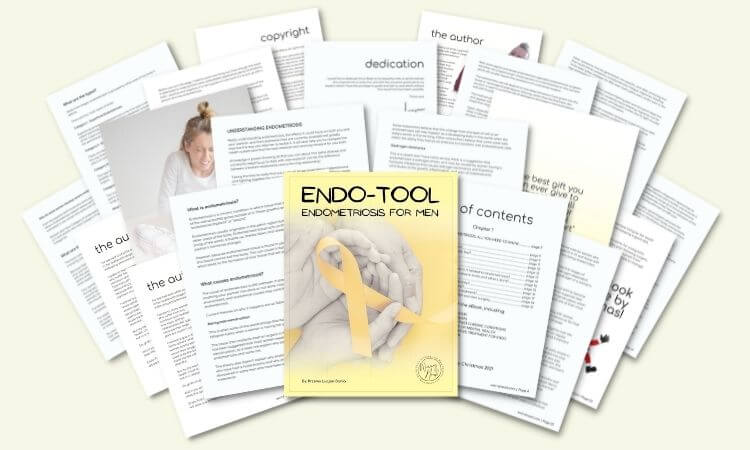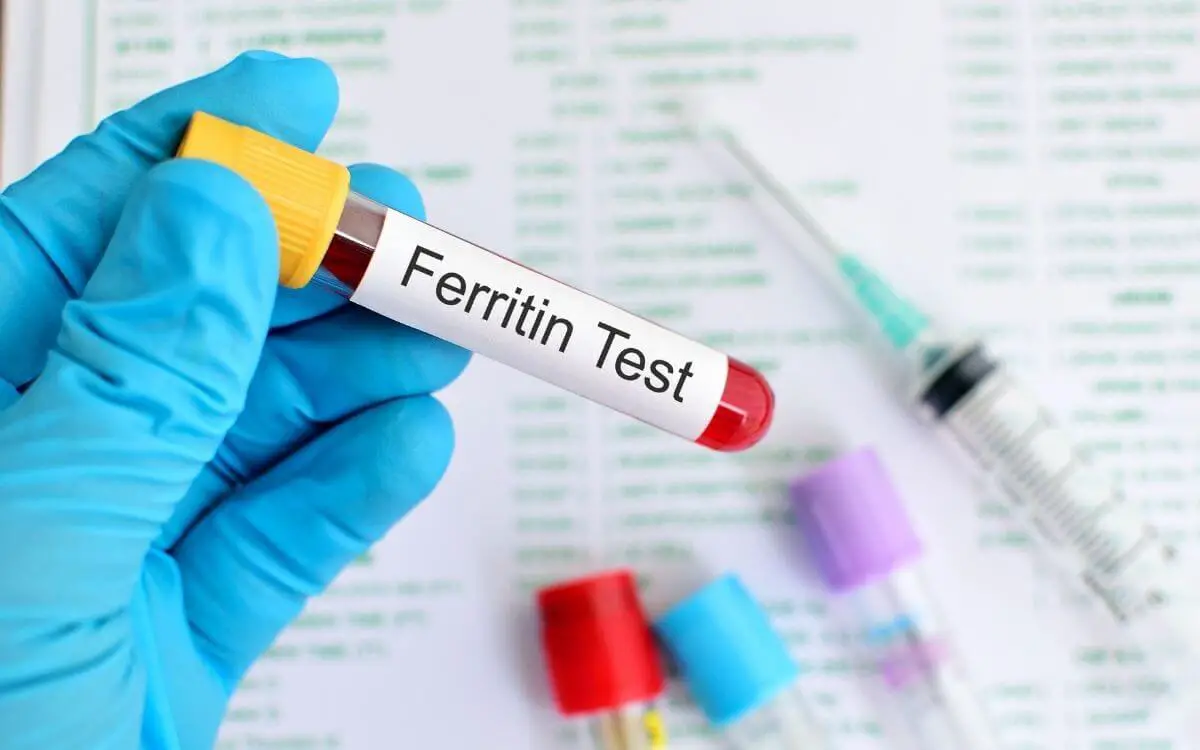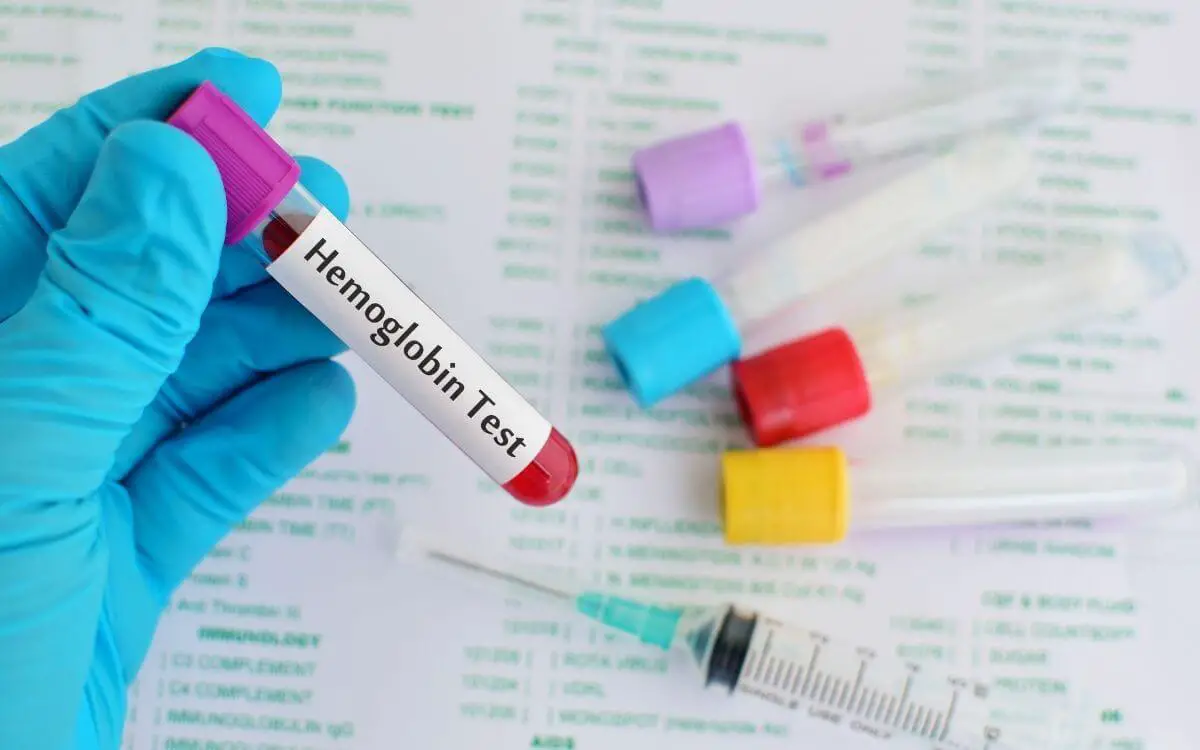Endometriosis and low ferritin levels: endometriosis iron deficiency.
Endometriosis and anemia are one of the most common issues among women suffering from this chronic condition. That includes my wife. Low ferritin levels often accompany anemia, a condition in which the body does not produce enough red blood cells to carry oxygen throughout the body. As the husband, I needed to learn about endometriosis and low ferritin levels.
This is what I found during my research:
Endometriosis and low ferritin levels are closely related. Both are caused by excessive menstrual bleeding and other endometriosis-related issues, such as inflammation. Without sufficient iron to make up for what’s lost through bleeding, women experience extreme fatigue and other symptoms of anemia.
Besides excessive bleeding, another cause of low ferritin levels is poor absorption of dietary iron. Therefore, it’s important for women with endometriosis to ensure they’re getting enough iron in their diet. Eating iron-rich foods such as meat, fish, eggs, legumes, and nuts can contribute to higher levels of ferritin. In some cases, iron supplements may be needed.
Thankfully, my wife’s low ferritin levels have improved since she undertook an iron infusion, which is necessary if you cannot absorb enough iron through the diet.
Endometriosis iron deficiency.
Without enough iron, your body cannot produce enough levels of hemoglobin found in your red blood cells. They carry oxygen.
So what happens if red blood cells cannot carry enough oxygen?
Mild anemia may not produce symptoms at all, however, more serious anemia will. It will cause you to have symptoms such as:
- shortness of breath
- fatigue
- dizziness
- feeling lightheaded
- pale skin
- fast heartbeat
Endometriosis can cause many nutrient abnormalities, but I wanted to focus on iron deficiency because it affected my wife, and I felt helpless seeing her deteriorate.
Endometriosis iron deficiency can be caused by:
- heavy menstrual bleeding
- inflammation
- poor iron absorption
If you want to learn more about endometriosis, I wrote an “Endo-Tool, Endometriosis for Men” e-Book.
You can get the 1st Chapter of the e-Book for FREE, and if you like it, you’ll get a Whopping 33% Discount on the Whole Book, plus discounts on other helpful tools. You have nothing to lose but a lot to gain!
The first chapter alone contains all the comprehensive medical knowledge about endometriosis, including:
- What is endometriosis?
- What are the symptoms?
- What causes endometriosis?
- What does endometriosis look like?
- What are the stages?
- What are the types?
- What is adenomyosis and how is it related to endometriosis?
- Why do some women develop severe endo and others don’t?
- Does endometriosis cause infertility?
- How is endometriosis diagnosed?
- Do types and stages affect the treatment?
- Recurrence of endometriosis after excision surgery.
FREE Chapter of “Endo-Tool”
Endometriosis e-Book for Men

Heavy menstrual bleeding.
Because of heavy menstrual bleeding, women with endometriosis lose more blood and iron than those who don’t have endometriosis. This can cause a rapid drop in iron levels over time.
If not treated, iron deficiency can turn into anemia.
Endometriosis and anemia caused by heavy bleeding can be managed by taking iron supplements and making dietary changes to increase the intake of iron-rich foods.
Additionally, medications or surgery may be recommended to reduce the amount of bleeding associated with endometriosis, however, inflammation may still cause an iron deficiency due to the destruction of red blood cells and a decrease in your body’s ability to absorb iron.
Inflammation and anemia.
Women with endometriosis are at higher risk of developing iron-deficient anemia than the general female population.
Endometriosis is known to cause inflammation and damage to the lining of the uterus, resulting in irregular bleeding and pain. This can lead to reduced absorption of iron in the intestines, causing low ferritin levels and eventually leading to anemia.
Additionally, endometriosis causes very heavy menstrual bleeding, which can also contribute to iron deficiency anemia if not managed properly. It is important for women with endometriosis to seek medical advice and follow their doctor’s instructions for managing their menstrual cycle.
This can help them avoid anemia caused by endometriosis and low ferritin levels associated with this condition. Like in my wife’s case, in more severe cases an iron infusion may be recommended.
Inflammation, heavy menstrual bleeding, and poor absorption of dietary iron can all contribute to endometriosis-associated anemia.
Poor iron absorption.
When the body is exposed to chronic inflammation, it can interfere with how much iron it absorbs from food and drinks. When your body does not absorb enough iron from your diet, you can become anemic.
Women with endometriosis are at higher risk of poor iron absorption due to their chronic inflammation.
The bottom line is that endometriosis and low ferritin levels are closely related and women suffering from endometriosis should pay special attention to their iron levels. Getting enough iron through the diet or taking supplements can help prevent nutrient deficiencies and anemia.
And it can also help improve the quality of life for women with endometriosis.
I’m happy to say that my wife has been able to manage her endometriosis and anemia with an iron infusion because her diet isn’t enough to make up for the lost iron. She has made lots of lifestyle changes, without having to resort to medication.

An iron deficiency without anemia.
Can you have iron deficiency without anemia? Yes, you can. A low ferritin level is an indicator of iron deficiency even when the hemoglobin levels are normal.
This can be confusing because even if your hemoglobin levels are normal, you may still be at risk of iron deficiency and should talk to your doctor about getting tested for ferritin levels.
Women with endometriosis should pay special attention to their iron levels and look for signs of anemia such as fatigue, pale skin, and shortness of breath. They should also talk to their doctor about getting tested for ferritin levels to ensure that they are not iron deficient, even if their hemoglobin levels are normal.
I feel like this is a clinical challenge not only for my wife but many women suffering from endometriosis. This is a huge bummer because you may feel constantly pushed away by the doctors as you don’t fit the system’s criteria.
Doctors should always consider iron deficiency even without anemia because your persisting, unexplained, unspecific, and often severe symptoms cause you to feel terrible, and long‐lasting iron deficiency may be challenging to treat.
Iron deficiency can be very severe despite a normal hemoglobin count. Symptoms may be debilitating, and if they last longer, should raise a doctor’s suspicion.
Sadly, general practitioners often dismiss or gaslight women.
They usually tell you that “period should hurt” and that you are probably anxious. Frequent blood loss during heavy menstruation should be taken seriously. It isn’t most of the time because of the mistaken idea of period pain and bleeding being seen as “a female thing”. Many male doctors will shut you down due to a lack of understanding of the menstruation cycle.
What are the normal levels of ferritin, hemoglobin, and iron?
If you fall below the normal ferritin level, it will cause you to have an iron deficiency. Normal ferritin level should be as follows:
- Males 12 to 300 ng/mL
- Females 12 to 150 ng/mL
If the ferritin level is lower than 30 μg/L, it is the best indicator of your iron deficiency, and its hidden danger needs to be taken into consideration, but sometimes your ferritin concentration may be near normal, while there is a lack of iron staining of bone marrow.
Normal hemoglobin levels are typically 14-18 g/dL for men and 12-16 g/dL for women. If the level of hemoglobin is lower than the reference range, it may indicate iron deficiency anemia.
Normal iron levels in men should range from 60-170 μg/dL, while in women should range between 40-155 μg/dL. If it’s lower than the reference range, it’s a sign of iron deficiency.
Symptoms of iron deficiency.
What do endometriosis and low ferritin levels have to do with shortness of breath, chronic fatigue, dizziness, feeling lightheaded, pale skin, and fast heartbeat?
To answer that, I’ll give you the most common symptoms of anemia that you should never ignore. I give you 10 examples of endometriosis and low ferritin levels symptoms below:
- Breathing issues, dizziness, and headaches.
- Chest pains and palpitations.
- Cold hands and feet.
- Cramping and tingling in your limbs.
- Chronic fatigue.
- Hypothyroidism.
- Iron and Vitamin B-12 deficiency.
- Unusually pale skin.
- Pica syndrome.
- Problems with focusing.
I quickly discuss all of them one by one…
FREE Chapter of “Endo-Tool”
Endometriosis e-Book for Men

1. Breathing issues, dizziness, and headaches.
When you are healthy, oxygen doesn’t struggle to get to your heart, brain, and organs.
With iron deficiency, your lungs overcompensate when you breathe in order to bring in more oxygen. That causes your breathing difficulties.
Additionally, low levels of hemoglobin prevent oxygen from reaching your brain.
This causes your blood vessels to swell and your blood pressure drops. That results in headaches, sometimes vertigo, and even fainting spells.
2. Chest pains and palpitations.
When your body has a low level of oxygen, your heart works extra hard to compensate for it.
That puts a lot of pressure on your heart causing it to beat faster, and irregularly, which in turn makes you experience pain in your chest.
3. Cold hands and feet.
If you suffer from iron deficiency, you may often experience cold hands and feet even during warm weather conditions because low levels of iron cause you to have poor circulation.
Less blood is delivered to the limbs, leaving them feeling cold.
4. Cramping and tingling in your limbs.
Your large muscles (like legs) require a lot of blood and oxygen to function.
When you are deprived of oxygen, it causes them to work harder, which is the cause of their fatigue, weakness, severe cramps, and restless leg syndrome. All that may contribute to insomnia.
Anemic patients may feel a crawling or itchy sensation in the feet and legs, which can worsen at night.
5. Fatigue, often chronic.
Another, the most common symptom of iron deficiency can be tiring easily and waking up tired even after you had a good night’s sleep.
These are common and potentially serious symptoms of anemia.
The reason being is the reduced number of blood cells that cannot carry the required levels of oxygen to your organs efficiently. This causes you to feel abnormal exhaustion, lethargy, and weakness.
6. Hypothyroidism.
Endometriosis and low ferritin levels can also cause hypothyroidism in some cases. It means that you may feel exhausted, gain weight, and have a lower body temperature.
All that could be symptoms of an underactive thyroid, which tends to occur alongside iron deficiency.
7. Iron and Vitamin B-12 deficiency.
The very core of this post. Without enough iron or vitamin B-12 consumption, the body cannot produce enough hemoglobin.
Hemoglobin is vital to the functioning of red blood cells because it’s rich in iron, which gives blood its red color.
Hemoglobin allows oxygen to “glue” to the cells so they can carry it into your bloodstream.
When there aren’t enough iron or vitamin B-12, some parts of your body won’t receive enough oxygen.
8. Unusually pale skin.
Your skin is the largest organ in your body. A healthy complexion has a glow. This is due to the capillaries under your skin that have a pink shade.
With anemia, such as iron deficiency, those capillaries lose red blood cells, which in turn, changes your natural pink tint. In some cases, the skin may even take on a yellowish color.
Pale skin is a very common sign of anemia.
You may be pale all over the body or in one area, such as the face, gums, or inside the lips. Also, your fingernails become all-white, which may indicate such anemia.

9. Pica syndrome.
Ever heard of that?
Me neither, until I researched it. It’s quite interesting. Pica syndrome is anemia that causes you to have an intense craving for unusual, non-nutritional items like ice or baking soda.
Sounds weird, right?
Well, pica can even cause cravings for dirt, pottery shards, paper, and even chalk! Yuk!! The explanation for pica syndrome is that the body is trying to make up for its iron deficiency.
10. Problems with focusing.
Lower levels of oxygen cause you to have low physical and mental energy levels. Naturally, this causes distraction and an inability to focus even on simple tasks.
Iron depletion.
I think we quite covered endometriosis and low ferritin levels are the reason for iron deficiency. But I wanted to discuss more the non-anemic kind, so-called, “iron depletion”…
Iron deficiency is a reduced content of total body iron.
Non-anemic deficiency is also called “latent” or “depleted” iron deficiency, therefore I will refer to non-anemic iron deficiency as “iron depletion”. Iron depletion can be three times as common as iron deficiency and yet not many people talk about it.
I won’t talk about the risk factors of iron depletion because the number of reasons is vast. We need to focus on endometriosis as the reason for it.
Endometriosis or not, your iron balance is regulated by the absorption of iron rather than its excretion.
Humans cannot actively excrete iron but your iron is absorbed from the small intestine.
There are two main forms of iron – haem iron (mainly found in meat) and non-haem iron (mainly from plants).
Haem iron is more easily absorbed. Unfortunately, my wife’s stomach doesn’t accept meat, grains, etc.
Non-haem iron may be in ferrous or ferric form. Ferrous one can be absorbed directly by the intestinal cells. Ferric iron has to be converted before it can be absorbed but its absorption can be improved by adding Vitamin C to your meals.
The absorption of this kind of iron is worse when you consume meals that have calcium in them. You may find calcium in some plant foods. You also should be wary of consuming too many drinks rich in caffeine, which can naturally be found in tea and coffee.
Don’t panic though coffee lovers!
You don’t have to cut coffee completely. My wife is Italian, imagine how she felt having to cut her favorite drink. She did not get rid of caffeine completely. M went from 6 coffees a day to half a shot of one coffee in the morning, one decaffeinated coffee mid-day, one normal tea, and one decaf tea.
Final thoughts on endometriosis and low ferritin levels…
Endometriosis and low ferritin levels are closely related and can cause anemia.
Women with endometriosis should be aware of their iron levels and look out for signs of anemia. It is important to talk to your doctor about getting tested for ferritin, even if your hemoglobin levels are normal so that you can make sure to get enough iron and prevent any nutrient deficiencies.
Remember the normal levels of ferritin, hemoglobin, and iron. If any of these levels are lower than the reference range, it may indicate an iron deficiency.
Endometriosis and iron deficiency can both be difficult to manage.
It is important for women to be aware of their iron levels and to talk to their doctor about getting tested for ferritin in order to prevent any nutrient deficiencies and ensure that they are getting enough iron.
This can help to reduce the symptoms of endometriosis and improve quality of life. With proper attention and care, endometriosis does not have to be a debilitating condition.
If you experience any of the symptoms associated with endometriosis and iron deficiency, make sure to talk to your doctor about getting tested for ferritin levels. This is the best way to ensure that you are getting enough iron and preventing any nutrient deficiencies.
Thanks for reading! Stay safe and healthy!
FREE Chapter of “Endo-Tool”
Endometriosis e-Book for Men



About Me
Hi, I’m Lucjan! The reason why I decided to create this blog was my beautiful wife, who experienced a lot of pain in life, but also the lack of information about endometriosis and fibromyalgia for men…
